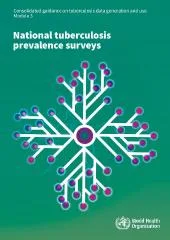Understanding National TB Prevalence Surveys
Tuberculosis (TB) remains a significant global health challenge, and accurately measuring its prevalence is crucial for effective control and prevention efforts. The World Health Organization (WHO) relies on national TB prevalence surveys as a primary method for estimating the true burden of TB disease within a country.
Why are these surveys important?
- Estimating the TB Burden: These surveys provide a snapshot of the proportion of a population affected by TB at a specific point in time. This data is essential for understanding the overall scope of the problem.
- Tracking Progress: By conducting these surveys repeatedly, health officials can monitor trends in TB prevalence. This allows them to assess whether interventions and control programs are having the desired impact.
- Evaluating Intervention Effectiveness: Observing changes in TB prevalence over time helps determine the effectiveness of various TB control strategies. If prevalence is declining, it suggests that current approaches are working. If prevalence remains stagnant or increases, it signals the need for adjustments.
- Guiding Resource Allocation: Accurate prevalence data is crucial for informing resource allocation decisions. Areas with higher TB burdens may require more funding for diagnostic services, treatment programs, and prevention campaigns.
- Measuring Impact Against Global Targets: The WHO’s End TB Strategy sets ambitious milestones and targets for reducing TB incidence globally. National prevalence surveys play a vital role in tracking progress toward these goals.
How Surveys Help to Meet Global Goals
The data collected from these surveys contributes directly to the assessment of progress towards the WHO End TB Strategy’s goals, which include significant reductions in TB incidence and mortality. The information gathered helps in refining strategies and ensuring that resources are directed where they are most needed.
The Impact of Surveys
Ultimately, national TB prevalence surveys are more than just data collection exercises. They are essential tools for:
- Guiding policy decisions
- Improving TB control programs
- Reducing the burden of TB disease worldwide
Final Overview
In conclusion, national TB prevalence surveys are indispensable for understanding the TB epidemic, measuring the impact of interventions, and ultimately, moving closer to a world free of TB. By providing crucial data and insights, these surveys empower health organizations and governments to make informed decisions and implement effective strategies to combat this global health threat.




+ There are no comments
Add yours